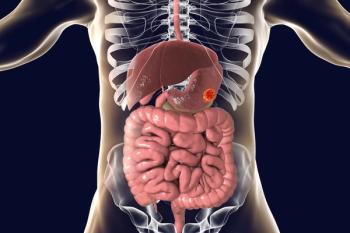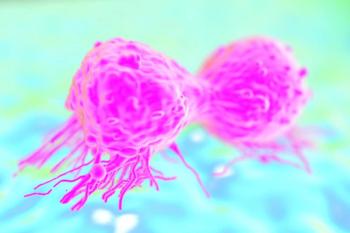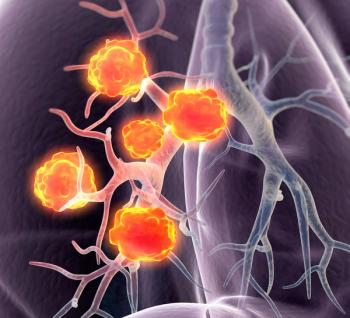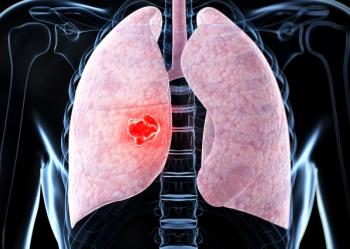
FDA Gives CRL to Linvoseltamab in Relapsed/Refractory Multiple Myeloma
The phase 1/2 LINKER-MM1 trial assessed linvoseltamab in relapsed/refractory multiple myeloma, of which the indication has been given a CRL by the FDA.
The News
The FDA has given a complete response letter to linvoseltamab for patients with relapsed/refractory multiple myeloma, after an issue was indicated from a third-party manufacturing site, according to a press release from Regeneron.1
The FDA further expanded that an issue occurred during an inspection of a third-party fill/finish manufacturing facility. Furthermore, this involved the packaging of the drug products for storage and distribution. The FDA has stated that the issue has been resolved. As of the press release date, a re-inspection by the FDA is planned for the coming months.
Supporting Data
Linvoseltamab was assessed by the
Findings showed that a once-weekly 200-mg dose of the BCMA-targeted T-cell-engaging bispecific antibody achieved an objective response rate (ORR) of 71.0% by independent review committee assessment, and a stringent complete response (sCR) rate of 44%, 49.6% of patients attained a complete response (CR) or better, and 63.2% experienced a very good partial response (VGPR) or better. CR, VGPR, and PR rates were 5%, 14%, and 8%, respectively. Median response time for a CR or better, VGPR or better, and PR or better were 8.5 months (range, 1.6-14.1), 2.6 months (range, 0.7-15.7), and 1 month (range, 0.5-6.3), respectively.
Patients who attained a VGPR or better and received at least 24 weeks of treatment received to treatment once every 4 weeks, with 64.5% of these patients achieving a CR or better post-transition. The estimated probability of maintaining a response at 1 year was 80.9% (95% CI, 70.3%-88.0%), with a median duration of response (DOR) of 29.4 months (95% CI, 19.2-not evaluable [NE]).
Between the two phases, the median age was 70 years (range, 37-91), 26.5% of which were 75 years or older. A total 72.6% of patients had an ECOG performance status of 1, 41.9%, 35.0%, and 17.9% had International Staging System (ISS) stage I, II, and III, respectively, information was missing for the remaining 5.1%. Of note, 16.2% had extramedullary disease, 39.3% had high-risk cytogenetics, and 23.9% had a 50% or higher bone marrow plasma cell percentage. Autologous transplant was recorded for more than half of patients (65.8%), with a median number of prior lines of treatment of 5 (range, 2-16). A total 100%, 95.7%, and 76.9% had at least triple-class, quadruple class, and penta-class exposure, respectively. Regarding refractory status, 82.1%, 65.8%, and 28.2% of patients had at least triple-, quadruple-, or penta-refractory disease, respectively, with 85.5% refractory to the last line of received therapy.
Expert Perspective
“Linvoseltamab demonstrated high efficacy in patients with late-stage relapsed/refractory multiple myeloma, including those in prespecified high-risk subgroups. The safety profile of linvoseltamab is acceptable. The most common treatment-emergent adverse effects [TEAEs] were cytokine release syndrome [CRS,] neutropenia, and anemia,” Sundar Jagannath, MBBS, said in a plenary presentation on the data. Jagannath is the director of the Center of Excellence for Multiple Myeloma and professor of medicine (hematology and medical oncology) at the Tisch Cancer Institute, Mount Sinai, in New York, New York.
LINKER-1 MM1 Trial Design
In the trial, the primary objective for the phase 1 portion of the study was to assess safety and for phase 2 was ORR.2 Secondary endpoints included ORR for phase 1, safety for phase 2, as well as progression-free survival (PFS) and overall survival (OS) for both. The data cutoff occurred September 8, 2023, and median follow-up was 11.1 months. The dosing regimen in the first 2 weeks included step-up doses of intravenous linvoseltamab, at 5 mg and 25 mg on days 1 and 8. Patients received subsequent full weekly 200 mg doses from week 3 to 14, transitioning to treatment at 2-week intervals weeks 16 to 23, and once every 2 or 4 weeks for week 24 onward depending on if VGPR or better was attained.
Inclusion criteria included a confirmed diagnosis of active multiple myeloma by International Myeloma Working Group (IMWG) diagnostic criteria, an ECOG performance status of less than or equal to 1, and for patients who have relapsed after a BCMA-directed CAR-T cellular therapy then treatment with CAR T-cell therapy must have been associated with PR or better, and CAR T-cell therapy was the most recent prior therapy, at least 60 days prior to treatment with linvoseltamab.
Exclusion criteria included diagnosis of plasma cell leukemia, primary systemic light-chain amyloidosis, Waldenström macroglobulinemia, or POEMS syndrome (polyneuropathy, organomegaly, endocrinopathy, monoclonal protein, and skin changes), patients with MM brain lesions or meningeal involvement, prior treatment with BCMA-directed immunotherapies, and history of allogenic stem cell transplantation at any time, or autologous stem cell transplantation within 12 weeks of treatment.
Adverse Effects
Common TEAEs reported in 20% or more of patients encompassed neutropenia (any grade, 42.7%; grade 3/4, 41.9%), anemia (38.5%; 30.8%), CRS (46.2%; 0.9%), cough (36.8%; 0%), diarrhea (37.6%; 1.7%), fatigue (33.3%; 0%), arthralgia (29.9%; 0%), hypokalemia (24.8%; 3.4%), nausea (23.1%; 0%), COVID-19 (22.2%; 9.4%), and headache (23.1%; 0.9%).3
Grade 1, 2, and 3 events occurred in 35%,10%, and 1% of patients who experienced CRS, with no grade 4 cases observed. Media time to initial CRS onset was 11 hours (range, -1.1 to 183.6) with a median resolution time of 15.6 hours (range, 1.0-96.0), primarily occurring during step-up dosing. CRS treatment with tocilizumab (Actemra; 19.0%) and corticosteroids (11.1%) was reported.
Nine patients (7.7%) were affected by immune effector cell-associated neurotoxicity syndrome (ICANS; grades 1-3, 2.6% each), with these events occurring concurrently with CRS or infusion-related reactions. Furthermore, 74.4% experienced infections (grade 3/4, 35.9%), with frequency and severity increasing over time. Additionally, 6 TEAEs (5.1%) were fatal with 30 days of the first dose, 5 due to infection and 1 due to renal failure.
References
- Regeneron provides update on biologics license application for linvoseltamab. News release. Regeneron Pharmaceuticals, Inc. August 20, 2024. Accessed August 21, 2024. https://tinyurl.com/2u2pvw82
- Lentzsch S, Bumma N, Lee HC, et al. Linvoseltamab in patients with relapsed/refractory multiple myeloma in the LINKER-MM1 study: depth and durability of response at 14-month median follow-up. Presented at: 2024 EHA Congress; June 13-16, 2024; Madrid, Spain. Abstract S212.
- Bumma N, Richter J, Jagannath S, et al. Linvoseltamab for treatment of relapsed/refractory multiple myeloma. J Clin Oncol. Published June 16, 2024. doi:10.1200/JCO.24.01008
Newsletter
Stay up to date on recent advances in the multidisciplinary approach to cancer.

















































































